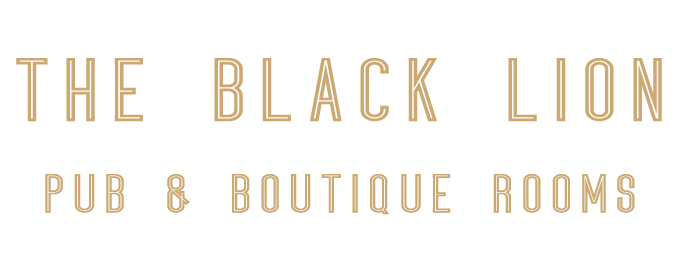The History of Black Lion
The Grade II-listed Black Lion on Kilburn High Road – or Watling Street if you have a much longer memory – has seen a thing or two. Opposite The Kiln Theatre, formerly The Tricycle, it is a hundred yards or so from the site of London’s only loyalist bombing during The Troubles, at Biddy Mulligan’s pub in 1975 (since replaced by flats).
The Black Lion had its own run-in with politics in 1991 when £5,000 of damage was done to it by National Front supporters chanting anti-Irish slogans while hurling bins, bottles and bricks through its soaring stained glass windows as a kind of warm-up to an England vs Ireland game at nearby Wembley.
In these thankfully less turbulent times, you can sit in one of the pub’s broad banquettes and try to visualise the original windows, dating from 1898, when the architect R A Lewcock collaborated with the sculptor and artist Frederick T Callcott to produce a building described by CAMRA, with unusual effusiveness, as a “tour de force”. Perhaps a conservation society will one day take an interest in replacing those windows – but what remains of the interior is still dazzling.
Callcott also worked on the celebrated arts-and-crafts-festooned Black Friar by the river, and the family resemblance to The Black Lion is unmistakable. Glowing wood panelling with genteel metal figures in 18th-century costume and an Anaglypta-esque moulded ceiling cast a spell in the main bar that takes the breath away.
The Black Lion offers contemporary Indian food throughout the week and serves traditional Sunday roast on Sundays.
Historic Kilburn in North London
If you are planning to visit London you may find this interesting and informative. Kilburn is situated on a historic site dating back to Roman Times. It has several iconic buildings, a busy cultural community and is excellent for public transport into central London and out into the rural counties of South East England.
Kilburn is a bustling small town, which is steeped in history, close to Maida Vale, Willesden and West Hampstead. The centre of Kilburn is Kilburn High Road, which is part of an ancient roman road, which runs from the north-east side of Hyde Park to St. Albans, where it was regarded as an important Roman settlement.
The name Kilburn is thought to be derived from the old Anglo-Saxon name of Cuneburna,Cyebourne or Kelebourne which was a stream flowing from Hampstead.
On the corner of Belsize Road and Kilburn High Road was Kilburn Priory, established in 1130. Before the dissolution of monasteries in 1536 by King Henry the Eight it gave food and shelter to pilgrims en route to local shrines. On the same site in around 1600, The Bell Inn was constructed. The tea gardens at The Bell Inn became a popular healing spa after a chalybeate spring was discovered at Kilburn Wells.
Kilburn is home to London’s largest Irish community and is therefore affectionately known as County Kilburn. After the great potato famine, large numbers of Irish Immigrants arrived and settle in Kilburn. Historians are divided as to why they chose Kilburn. The St. Patrick’s Days parade is a colourful and important event in Kilburn.
Kilburn is also famous for the Gaumont State Cinema, which is a grade 2 listed building and built-in 1937. It was the biggest cinema in Europe when it opened before World War 2, seating over 4000 people. A large dome tops the huge auditorium.
In the reception, the foyer is two chandeliers which are larger replicas of those at Buckingham Palace. The State is now a bingo hall but due to having the largest working Wurlitzer Organ in the UK they occasionally host Wurlitzer concerts.
103-foot-high landmark tower lit up in neon red at night. The State has hosted The Beatles and Louis Armstrong to name just a couple of many.
First known as the Kilburn National Ballroom, then Kilburn National Club, and later The National, has hosted literally hundreds of artists from The Smiths in the 1980′s to Nirvana. There was a music TV programme broadcast live from The National in the ’80s. The place has since been closed down and is going to become a new venue.
The Tricycle Theatre was founded in 1980 and was refurbished in the same decade after a fire. The Triangle has become one of London’s most popular theatres. It houses workshops, recording studios, and a café bar.
Kilburn is one of the best-served communities in Greater London for public transport. There are two tube stations on the High Road which are both in zone 2; Kilburn Station and Kilburn Park Station. Kilburn is also served by London’s overground rail network. Kilburn High Road station is two stops from London Euston. There are also many bus routes which pass through Kilburn.
If you are travelling by car, then Kilburn High Road is one of the main arterial roads out of London, going north towards Junction 1 of the M1.
Plenty of famous people have inhabited Kilburn over the years: Dusty Springfield, AA Milne, Evelyn Waugh, Joan and Jackie Collins, and Dirk Bogarde. Ian Dury lived in Kilburn and six years before he hit the UK charts with “hit me with your Rhythm Stick” his band was known as “Kilburn and the High Roads”.
